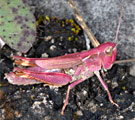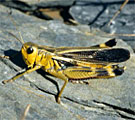Acrotylus longipes (Charpentier, 1845)
![Acrotylus longipes: Male (Peloponnes, western coast, early August 2019) [N] Acrotylus longipes: Male (Peloponnes, western coast, early August 2019) [N]](thumbs/acrididae/longipes_im2019.jpg)
![Acrotylus longipes: Male (Peloponnes, western coast, early August 2019) [M] Acrotylus longipes: Male (Peloponnes, western coast, early August 2019) [M]](thumbs/acrididae/longipes_2im2019.jpg)
![Acrotylus longipes: Female (Peloponnes, western coast, early August 2019) [N] Acrotylus longipes: Female (Peloponnes, western coast, early August 2019) [N]](thumbs/acrididae/longipes_3im2019.jpg)
![Acrotylus longipes: Male (N-Greece, Katerini, late June 2013) [N] Acrotylus longipes: Male (N-Greece, Katerini, late June 2013) [N]](thumbs/acrididae/longipes_7im2013.jpg)
![Acrotylus longipes: Male (N-Greece, Katerini, late June 2013) [N] Acrotylus longipes: Male (N-Greece, Katerini, late June 2013) [N]](thumbs/acrididae/longipes_3im2013.jpg)
![Acrotylus longipes: Female (Greece, Samos Island, Ireon, June 2016) [N] Acrotylus longipes: Female (Greece, Samos Island, Ireon, June 2016) [N]](thumbs/acrididae/longipes_4im2013.jpg)
![Acrotylus longipes: Female (Greece, Samos Island, Ireon, June 2016) [N] Acrotylus longipes: Female (Greece, Samos Island, Ireon, June 2016) [N]](thumbs/acrididae/longipes_5im2013.jpg)
![Acrotylus longipes: Female (Greece, Samos Island, Ireon, June 2016) [M] Acrotylus longipes: Female (Greece, Samos Island, Ireon, June 2016) [M]](thumbs/acrididae/longipes_6im2013.jpg)
![Acrotylus longipes: Adult (Rhodes, September 2013) [N] Acrotylus longipes: Adult (Rhodes, September 2013) [N]](thumbs/acrididae/longipes_im2013.jpg)
![Acrotylus longipes: Adult (Fuerteventura) [N] Acrotylus longipes: Adult (Fuerteventura) [N]](thumbs/acrididae/longipes_i2009.jpg)
![Acrotylus longipes: Adult (Fuerteventura) [N] Acrotylus longipes: Adult (Fuerteventura) [N]](thumbs/acrididae/longipes_2i2009.jpg)
![Acrotylus longipes: Habitat in the dunes near Costa Calma (Fuerteventura) [N] Acrotylus longipes: Habitat in the dunes near Costa Calma (Fuerteventura) [N]](thumbs/acrididae/longipes_h2009.jpg)
![Acrotylus longipes: Habitat in Rhodes south of Archangelos (September 2013) [N] Acrotylus longipes: Habitat in Rhodes south of Archangelos (September 2013) [N]](thumbs/acrididae/longipes_h2013.jpg)
![Acrotylus longipes: Habitat (Peloponnes, western coast, early August 2019) [N] Acrotylus longipes: Habitat (Peloponnes, western coast, early August 2019) [N]](thumbs/acrididae/longipes_h2019.jpg)
![Acrotylus longipes: Habitat (Peloponnes, western coast, early August 2019) [N] Acrotylus longipes: Habitat (Peloponnes, western coast, early August 2019) [N]](thumbs/acrididae/longipes_2h2019.jpg)
Nutrition:
The species feeds mainly on herbaceous plants and dry plant parts. If present, they should also accept grass.
Habitat:
Acrotylus longipes inhabits mainly dunes area with fine sand. In Fuerteventura, they colonize especially the dunes in the south and north.
Life cycle:
The adults can be found almost all year round. They dig themselves in bad weather (storm!) in sandy soil.
Endangerment factors:
Acrotylus longipes is threatened in Southern Europe and on the Canary Islands by the increasing coastal degradation through uncontrolled development of tourism and the associated infrastructure, that is sometimes even funded by the EU. Partly also agricultural intensification (also funded by the European Union) is another problem.
Remarks:
Acrotylus longipes is found in the northern half of Africa, Southwestern Asia and partly Southern Europe. It also occurs in the Canary Islands.
Hints on determination:
Acrotylus longipes is easily determined through the more yellowish hindwings.
Acrotylus fischeri | Acrotylus insubricus | Acrotylus patruelis


